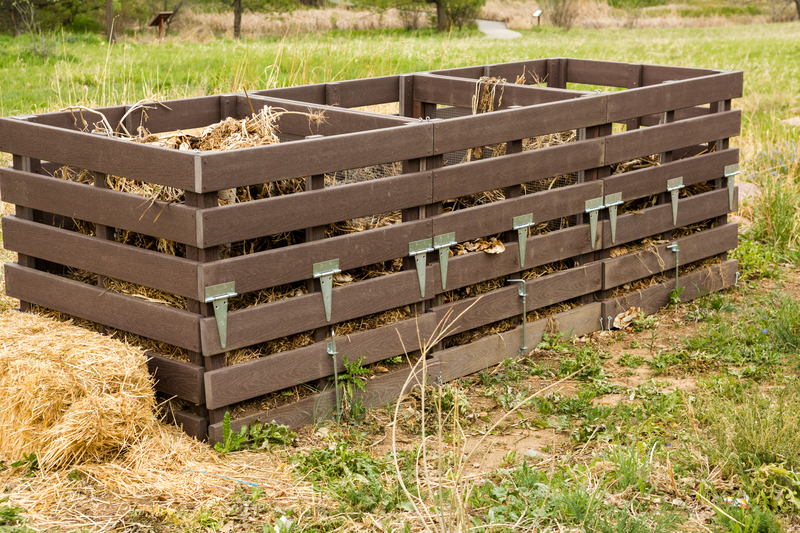Uncover the Beauty in Minimalism and Decluttering
In a world overflowing with distractions, possessions, and endless to-do lists, the idea of minimalism and decluttering is more appealing than ever. Beyond being a trendy buzzword, minimalism invites us to intentionally focus on what truly matters by eliminating the non-essentials. But what is the real beauty of a minimalist lifestyle, and how can decluttering our homes, minds, and lives transform us for the better? In this comprehensive guide, we'll delve deep into the art and science of minimalism and decluttering--exploring their core principles, the benefits they offer, practical steps to get started, and inspiring stories that demonstrate the life-changing power of living with less.
Understanding Minimalism and Decluttering
What Is Minimalism?
Minimalism is more than a design trend marked by empty white spaces and sleek furniture. At its core, it is a philosophy--an intentional way of living that emphasizes quality over quantity. It encourages us to find contentment in simplicity, appreciate the present moment, and shape our environment to reflect our deepest values.
- Intentionality: Choosing what to keep and what to release based on necessity and joy.
- Simplicity: Reducing complexity in all areas of life--from possessions to commitments to thoughts.
- Focus: Directing attention and energy toward what truly matters to you.
Decluttering Defined
Decluttering refers to the process of removing unnecessary or unwanted items from your environment. This act goes beyond tidying up; it paves the way for mental clarity, emotional well-being, and a sense of freedom. While minimalism sets the mindset, decluttering is the action that enables transformation.

The Profound Benefits of Minimalism and Decluttering
1. Enhances Mental Well-being
Clutter stresses the mind. Studies show that disorganized spaces increase anxiety, reduce productivity, and make it difficult to focus. By embracing a minimalist approach and clearing our physical space, we also cleanse our mental landscape, allowing for heightened clarity and creativity.
2. Cultivates More Time and Energy
When your house and schedule are free of excess, you reclaim hours that would have been spent cleaning, organizing, and worrying about things you don't really need. Living minimally gives you more time for family, creativity, relaxation, and personal growth.
3. Saves Money and Reduces Consumption
Minimalists are conscious consumers. By buying only what is necessary and meaningful, you spend less on impulse purchases and avoid the vicious cycle of accumulation and disposal. The result is a lighter financial and environmental footprint.
4. Sparks Joy and Gratitude
By letting go of the non-essentials, every item you choose to keep becomes more valuable--each object brings you joy or serves a clear purpose. Practicing minimalism and decluttering heightens your sense of gratitude for what you own.
5. Fosters Personal Growth
Minimalism prompts you to ask hard questions: What do I really value? What brings me happiness? This self-reflection moves you closer to living authentically and intentionally.
Debunking Myths About Minimalism and Decluttering
-
Myth #1: Minimalism means living with nothing.
In reality, minimalism encourages you to own only what adds true value to your life, not to deprive yourself of necessities or joys. -
Myth #2: Decluttering is a one-time event.
Decluttering is an ongoing process; it requires regular evaluation and adjustment as your needs and values evolve. -
Myth #3: Minimalist homes look cold and sterile.
Minimalist spaces can be warm, inviting, and personalized--they simply avoid unnecessary excess.
How to Start Your Minimalist and Decluttering Journey
Step 1: Define Your 'Why'
Your motivation is your anchor. Reflect on why you want to pursue minimalism and decluttering. Are you seeking more time, less stress, or a better living environment? Write down your reasons and keep them visible.
Step 2: Start Small--Pick a Space
Avoid overwhelm by focusing on a single area--a drawer, a closet, or a desk. Set a timer and sort through items, choosing to keep, donate, or discard based on necessity and joy.
Step 3: Use Decluttering Methods That Work for You
- Marie Kondo Method: Hold each item and ask, "Does this spark joy?"
- The Four-Box Technique: Label boxes Keep, Donate, Discard, Relocate and sort items accordingly.
- Minimalist Game: Remove one item on day one, two on day two, and so on, for thirty days.
Step 4: Rethink Purchases
Practice mindful shopping: Wait 24 hours before buying non-essentials, invest in quality over quantity, and avoid 'retail therapy' as a source of happiness.
Step 5: Create an Ongoing Habit
Set aside time weekly or monthly to revisit your space. Continuously ask: Do these possessions support my values and goals?
Minimalism Beyond Physical Possessions
Digital Declutter
In our hyper-connected age, digital clutter can be just as draining as physical mess. Consider clearing out old emails, organizing digital files, and limiting app usage to essentials. Unsubscribe from unnecessary content and turn off distracting notifications.
Emotional and Mental Decluttering
Minimalist living isn't just about things; it's about mental space. Let go of limiting beliefs, toxic relationships, and outdated habits. Practice mindfulness, meditation, and journaling to declutter your thoughts and emotions.
Schedule and Commitment Simplification
Evaluate your time commitments and activities. Are you saying 'yes' out of obligation? Prioritize your highest values and let go of appointments, subscriptions, or routines that no longer serve your purpose.
Minimalism in Interior Design: Aesthetic Beauty
The minimalist aesthetic is recognized for its elegance, calm, and order. But true beauty in minimalist home design comes not from simply removing items, but from thoughtful choices that prioritize function and soul.
- Neutral Palettes: Whites, beiges, greys create a serene, timeless backdrop.
- Natural Materials: Stone, wood, plants add warmth and connection to nature.
- Thoughtful Lighting: Use sunlight, strategic lamps, and candles to foster relaxation.
- Meaningful Decor: Display only art, photographs, or objects that spark joy and memories.
Spaces designed with intention feel lighter, airier, and more welcoming. Each object and piece of furniture has a clear role, supporting both utility and beauty.
Real-Life Examples: Transformational Minimalism Stories
Meet Emily: Once overwhelmed by chaotic closets and endless shopping sprees, Emily used decluttering strategies to pare her wardrobe down to items she loved and wore regularly. She now spends less time getting dressed, feels more confident, and even saved money by stopping impulse buys.
The Johnson Family: Facing stress and lack of time together, the Johnsons embraced minimalist living. They replaced extracurricular overload with family game night, reduced screen time, and simplified their living room. Their mental health improved, and so did family bonds.
Digital Nomad Mark: By digitizing documents, selling most possessions, and reducing digital clutter, Mark travels lighter and is more productive. He credits minimalism with freeing up headspace for bigger creative projects.
Common Challenges and How to Overcome Them
- Sentimental Attachments: For items loaded with memories, consider taking photos before letting go, or keeping only the most meaningful pieces.
- Guilt Over Waste: Donate or recycle whenever possible. Frame your actions as passing items on to those who need them.
- Fear of Missing Out: Remind yourself of your reasons for simplifying, and celebrate the gains: more freedom, less stress, increased creativity, and peace.
- Time Constraints: Minimalism is a process, not a race. Small, consistent efforts are more sustainable than marathon cleaning sessions.
Essential Resources for Your Minimalist and Decluttering Journey
- Books: The Life-Changing Magic of Tidying Up by Marie Kondo, The Minimalist Home by Joshua Becker
- Documentaries: Minimalism: A Documentary About the Important Things
- Websites & Blogs: Becoming Minimalist, The Minimalists, and Zen Habits
- Apps: Minimalist To-Do lists, Digital Organization tools (e.g., Evernote, Todoist)

Frequently Asked Questions About Decluttering and Minimalism
Is it possible to live minimally in a large family or shared home?
Absolutely. Minimalism looks different for everyone. For families, focus on common values--shared activities, functional spaces, and regular decluttering routines. Encourage each member to have a say in what matters.
What if I love art, books, or collectibles?
Minimalism isn't about deprivation. Curate your collections--keep what inspires and delights you, display items meaningfully, and let go of duplicates or irrelevant pieces.
How do I maintain a clutter-free lifestyle?
Adopt intentional habits: Regularly review your possessions, be mindful of new acquisitions, and re-evaluate spaces seasonally. Minimalism is less about what you let go, more about what you invite and keep.
Conclusion: The Lasting Beauty of Minimalism and Decluttering
Life is too precious to be buried under excess--we each deserve a space and a life that reflect our truest selves. The beauty of minimalism and decluttering lies in the space it creates: room to breathe, to dream, to love, and to thrive. By choosing quality over quantity, intention over impulse, and simplicity over chaos, you gift yourself the freedom to uncover joy in the ordinary. Start your journey of minimalism today and experience the remarkable transformation firsthand.
If you're ready to embrace a calmer, clearer, and more beautiful life, let minimalist living and decluttering lead the way. Remember, it's not about perfection--it's about purpose.